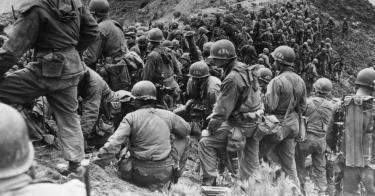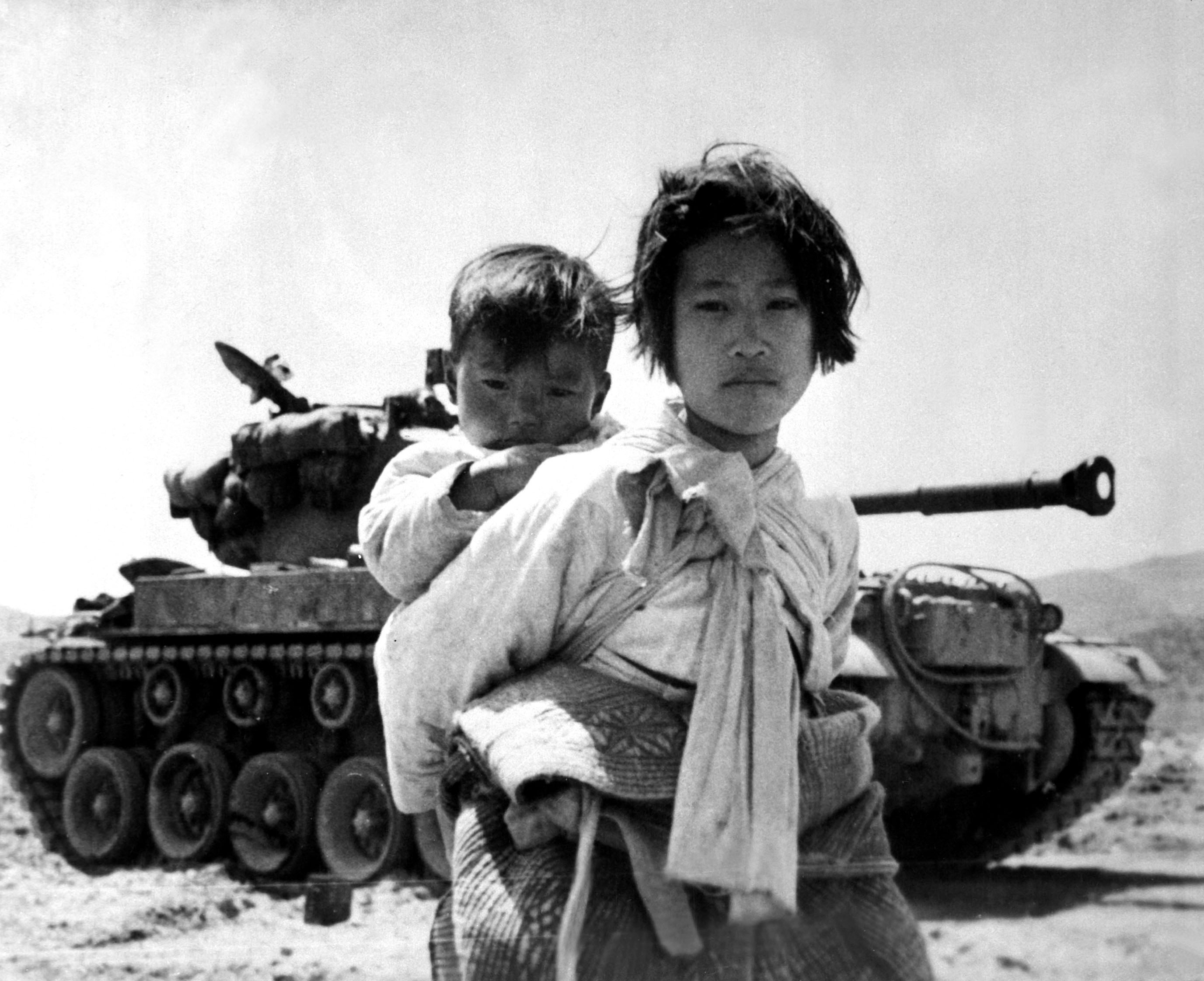Describe the Course of the Korean War
The Korean War also known by other names was fought between North Korea and South Korea from 1950 to 1953. North Korea attacked South Korea on June 25 1950 igniting the Korean War.

5 Lessons From The Korean War The Heritage Foundation
- peninsula was permanently divided no hope of reunification.

. The Korean War was an important development in the Cold War because it was the first time that the two superpowers the United States and the Soviet Union had fought a proxy war in a. Korea divided between North and South. The Korean War 1950-1953 World War II divided Korea into a Communist northern half and an American-occupied southern half divided at the 38th parallel.
Course of the war. A M-20 75mm recoilless rifle is fired during the Korean War. North Korean infantry and tanks cross the 38th Parallel and meet little resistance.
The Americans drove the Chinese back but lost 54000 American soldiers dead doing. A column of the US. The Korean War 101.
Describe the major events. Up to 24 cash back The Korean War - What Happened. Followed by a stalemate that lasted until 1953.
It was fought between North Korea and the South Korea throughout the early part of the 1950s. STAGE ONE - NORTH KOREAN INVASION. 3 US COUNTER-ATTACK with with a SEA INVASION at INCHON 200miles behind the Communist lines 4 UN FORCES push OVER the 38TH.
The North Koreans invaded South Korea June 1950. Describethe main events of the Korean War 195053. KOREA forces INVADE and CAPTURE SEOUL.
It was sparked by the June 25 1950 invasion of South Korea by 75000 members of the North Korean Peoples Army. Temporary border at 38th parallel established. UN landing at Incheon harbor starting point of the Battle of Incheon.
The outcome of the Korean War included heavy casualties a country left in ruins and a military victory for neither side. This division resulted in the formation of two countries. Occasional border skirmishes throughout the late 1940s erupted into an all-out war when nearly 100000 North Korean soldiers crossed the DMZ and attacked South Korea on.
A massive artillery barrage from the North signals the beginning of the Korean War. Jun 25 North Korea launches a full scale attack against South Korea. Causes Course and Conclusion of the Conflict.
As Kim Il-sungs North Korean army armed with Soviet tanks quickly overran. The Korean War begins. The Korean War 1950-1953 was the first military action of the Cold War.
Death figures are estimated at a total of approximately 2 million. The Chinese admitted to losing 390000 men dead - UN sources put the figure at up to a million Chinese and half a million North Koreans dead. Soviets Americans withdraw military.
KOREAN and UN forces are PUSHED BACK TO PUSAN. Over the course of two years 1951-1953 overland campaigns were halted in favor of massive air campaigns over North Korea. However there was continued threat of invasions and China emerged from the war with renewed strength.
On July 27 1953 an armistice was signed and the fighting stopped. 1st Marine Divisions infantry and armor moves through Chinese lines during their breakout from the Chosin Reservoir. This is the start of the Korean War.
Despite the signed truce the conflict was not settled and Korea remains. Jun 27 In a joint announcement the United Nations and the United States condemn the actions of North Korea. The Korean War was a conflict that lasted three years and brought with it numerous deaths in battle as well as a lack of food and inadequate living conditions.
- North Korea remains under communist rule while South Korea became a successful democratic and capitalist nation. The Korean War was the first major conflict following the end of World War II and the first war of the Cold War between the United States and Soviet Union. Roughly 100000 North Korean troops pour across the 38th parallel and although South Korean forces are driven back they retire in good order.
- 38th parallel became a heavily defended frontier in the Cold War still exists today. - war had led to the deaths of over 300000 civilians and extensive property damage. The Korean war began on June 25 1950 when some 75000 soldiers from the North Korean Peoples Army poured across the 38th parallel the boundary between the.
The war began on 25 June 1950 when North Korea invaded South Korea following clashes along the border and rebellions in South Korea. The north had the support of communist allies including the Soviet Union and China while the south had the support of the west with the. The Korean War 1950-1953 began when the North Korean Communist army crossed the 38th Parallel and invaded non-Communist South Korea.
Summarize the causes of the Korean War. The Korean War 1950-1953. North Korea captured almost all of the entire Korean peninsula apart from Pusan small pocket of land in the South-East STAGE TWO - UN COUNTER-ATTACK.
By July they had captured most of South Korea. Started as a war of movement - Dramatic changed in the first year. The Americans landed more troops.
Korean refugees in front of an American M26 Pershing tank. At first the North Korean Peoples Army NKPA easily defeated the Republic of Koreas army the ROKs. Army photo Against all advice from China and the USSR North Korean leader Kim Il.
Marines led by First Lieutenant Baldomero Lopez landing at Incheon. Following Japanese surrender Soviets maintained military presence in the North with American troops in the South. Describe the events of the Korean War 4 mark 1 JUNE 1950.
When Korea was liberated from Japanese control at the end of the Second World War the United States and the Soviet Union agreed temporarily to divide Korea at the 38th parallel of latitude north of the equator. THE COURSE OF THE KOREAN WAR. Cold War assumptions governed the immediate reaction of US leaders who instantly concluded that Soviet Premier Joseph Stalin had ordered the invasion as the first step in his plan for world conquest.
Communist North Korea supported by the Soviets and South Korea supported by.

Korean War Causes Timeline Veterans History

The Korean War Article 1950s America Khan Academy


No comments for "Describe the Course of the Korean War"
Post a Comment